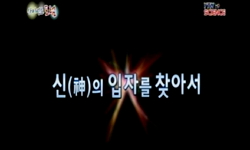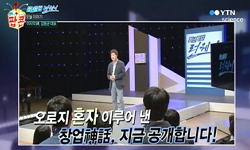The essay is focused upon understanding Zong Bing’s Buddhist world-view the concepts of physical form and spirit and their relationship, which are constituted into a major category in the thought of art as well as in the history of Chinese thought, ...
http://chineseinput.net/에서 pinyin(병음)방식으로 중국어를 변환할 수 있습니다.
변환된 중국어를 복사하여 사용하시면 됩니다.
- 中文 을 입력하시려면 zhongwen을 입력하시고 space를누르시면됩니다.
- 北京 을 입력하시려면 beijing을 입력하시고 space를 누르시면 됩니다.

儒?佛 문화논쟁에서 본 宗炳의 불교세계관 및 藝術觀(1) = Zong Bing's World-view and Artistic Thought In Terms of the Cultural Controversies of Confucianism and Buddhism(1)
한글로보기부가정보
다국어 초록 (Multilingual Abstract)
The essay is focused upon understanding Zong Bing’s Buddhist world-view the concepts of physical form and spirit and their relationship, which are constituted into a major category in the thought of art as well as in the history of Chinese thought, by dealing with the argument between the doctrine of the spirit-mortality and the doctrine of the spirit-immortality, both of which represent an idealogical controversy of Confucianism versus Buddhism in Wei Jin Nan Bei dynasties.
Hui Yuan, who is the principal proponent of the doctrine of pirit-immortality and the teacher of Zong Bing, argued the relationships of spirit, emotion and external objects under the main premise that “spirit and physical form are unlike, but change together. The inside and the outside are different but harmonious.” This logic analyzed elaborately the human life and the world of the soul. On the foundation of this logical thinking-way, Zong Bing wrote 「Ming-fo-lun」. According to 「Ming-fo-lun」, because originally emotion is not in contact with external objects, spirit is equivalent to soul. But, in reality, emotion is in contact with external objects, so spirit is turned into the vulgar soul. Reversely, he develops his logic based on the premise that soul is originally spirit and man can reach jietuo through the purification of soul. Through his self-negation the function of emotion ceases, man reaches the state of transcendence (wuwei), his physical form or worldly life is meaningless, finally accomplishes the jietuo where soul is spirit in the sense of originality. This also establishes the logical base that spirit dwells in landscape, and man reaches the world of Dao through the spirit of landscape.
국문 초록 (Abstract)
본 논문은 위진남북조시대에 유교와 불교 사이에 문화적 해석의 차이점에 따른 이념적 논쟁에서 등장한 주요한 범주인 形과 神의 개념 및 그 양자의 관계를 통해 宗炳의 불교세계관을 논하...
본 논문은 위진남북조시대에 유교와 불교 사이에 문화적 해석의 차이점에 따른 이념적 논쟁에서 등장한 주요한 범주인 形과 神의 개념 및 그 양자의 관계를 통해 宗炳의 불교세계관을 논하고자 한다. 종병은 하승천과의 儒·佛 문화권의 논쟁의 일환으로 쓴 「明佛論」에서 佛만이 神으로써 道를 본받는다고 하는, 神不滅論을 근간으로 하는 불교의 사유이론을 제시하고 있다. 특히 그는 形과 神에 연결시켜 有와 無가 인연을 맺게 함으로써 形의 조야함과 神의 미묘함이 혼연일체가 될 수 있는 근거를 마련해 놓고 있다. 여기에서 종병은 자연산수와 같은 만물 속에 神이 담겨져 있고 인간은 이 만물의 神을 통해 道의 경지에 이를 수 있다는 일종의 존재론적 근거를 세우고 있는 셈이다. 神은 자연만물 즉 形을 직접 낳는 것이 아니라 외형적 사물과 감응하여 形을 낳는 것이다. 形이 없어진다 해도 神은 새로운 形과 결합하여 소멸하지 않는다. 이것은 바로 혜원의 신불멸론 즉 形과 神은 각각 달라 안과 밖이라는 구별이 있지만 그 양자는 서로 함께 변화하여 혼연일체가 된다는 입장과 같다. 그러나 종병은 혜원과 달리 情과 形 사이에 識의 방식을 설정하고 이 방식을 통해 인간은 해탈을 할 수 있다는 역설한다.
참고문헌 (Reference)
1 何承天, "達性論 弘明集"
2 "沙門不敬王者論 弘明集"
3 宗炳, "明佛論, 弘明集"
4 慧遠, "三報論,高僧傳"
1 何承天, "達性論 弘明集"
2 "沙門不敬王者論 弘明集"
3 宗炳, "明佛論, 弘明集"
4 慧遠, "三報論,高僧傳"
동일학술지(권/호) 다른 논문
-
- 동국대학교 불교문화연구원
- 지창규(Chang Gyu Ji)
- 2007
- KCI등재후보
-
- 동국대학교 불교문화연구원
- 김종두(Jong Doo Kim)
- 2007
- KCI등재후보
-
선종(禪宗) 흥성(興盛) 과정(過程)에 나타난 당(唐)과 신라(新羅) 우국(雨國)의 동일상(同一狀)과 차별상(差別狀)
- 동국대학교 불교문화연구원
- 김병곤(Byeong Gon Kim)
- 2007
- KCI등재후보
-
조선초(朝鮮初) 사원(寺院)의 실태(實態)와 그 기능(機能)
- 동국대학교 불교문화연구원
- 윤기엽(Ki Yeop Yoon)
- 2007
- KCI등재후보
분석정보
인용정보 인용지수 설명보기
학술지 이력
| 연월일 | 이력구분 | 이력상세 | 등재구분 |
|---|---|---|---|
| 2028 | 평가예정 | 재인증평가 신청대상 (재인증) | |
| 2022-09-16 | 학회명변경 | 영문명 : Institute for Buddhist Culture -> Buddhist Culture Research Institute |  |
| 2022-01-01 | 평가 | 등재학술지 유지 (재인증) |  |
| 2019-01-01 | 평가 | 등재학술지 유지 (계속평가) |  |
| 2016-01-01 | 평가 | 등재학술지 유지 (계속평가) |  |
| 2013-01-23 | 학회명변경 | 영문명 : The Korean Buddhist Research Institute -> Institute for Buddhist Culture |  |
| 2012-01-01 | 평가 | 등재학술지 유지 (등재유지) |  |
| 2009-01-01 | 평가 | 등재학술지 선정 (등재후보2차) |  |
| 2008-01-01 | 평가 | 등재후보 1차 PASS (등재후보1차) |  |
| 2007-01-01 | 평가 | 등재후보학술지 유지 (등재후보2차) |  |
| 2006-01-01 | 평가 | 등재후보 1차 PASS (등재후보1차) |  |
| 2004-01-01 | 평가 | 등재후보학술지 선정 (신규평가) |  |
학술지 인용정보
| 기준연도 | WOS-KCI 통합IF(2년) | KCIF(2년) | KCIF(3년) |
|---|---|---|---|
| 2016 | 0.73 | 0.73 | 0.69 |
| KCIF(4년) | KCIF(5년) | 중심성지수(3년) | 즉시성지수 |
| 0.63 | 0.55 | 1.313 | 0.17 |
연관 공개강의(KOCW)
-

Faith and Form: Exploring the Physical Aspects of Religion
Teachers TV Teachers TV -

xD19 Emotion + Function(感性 + 機能)
홍익대학교 쿠니히사 이토(kunihisa Ito), 이근(Lee Keun) -

Emotion cards, anger management game, motivational stickers
Teachers TV Teachers TV -

신(神)의 입자를 찾아서
YTN SCIENCE YTN SCIENCE -

이사의 神(신), 김동균 대표
YTN SCIENCE YTN SCIENCE




 KCI
KCI


